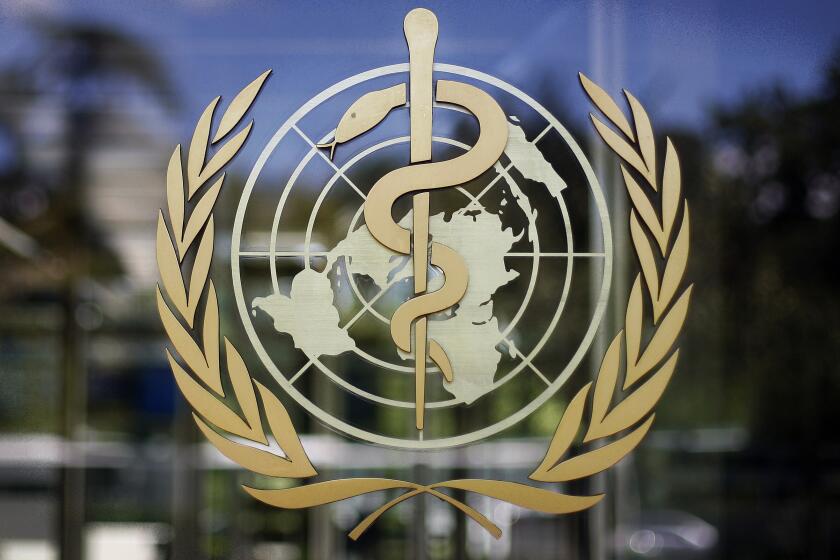Europe has nearly half of the world’s 4 million new coronavirus cases

- Share via
GENEVA — Europe made up almost half of the world’s 4 million new coronavirus cases last week but recorded a nearly 10% fall in infections compared to the week before, thanks in part to strict but frequently unpopular government lockdown measures, the World Health Organization reported Wednesday.
The latest weekly tally from the U.N. health agency found that the 54 nations it classifies as part of Europe accounted for 46% of new cases. The nearly 10% decline in the number of new cases followed “the strengthening of public health and social measures” in the region. But at the same time, the tally of COVID-19 deaths rose “substantially” in Europe over the last week to more than 29,000, WHO said.
The WHO’s Americas region saw a 41% increase in new cases, suggesting that a higher weekly death toll could soon follow there. Southeast Asia was the only region that saw a drop in both cases and deaths.
In Europe, the WHO said the sharpest rise in coronavirus cases was in Austria, which saw a 30% increase in new infections compared to the previous week. The agency also noted that Britain was the first country in the region to record more than 50,000 deaths.
Pockets of Western Europe have shown signs of turning a corner, particularly in the lowlands near the English Channel.
Belgium — which at one point recently had Europe’s highest infection rate — said Wednesday it had taken a major step in containing the resurgence of the coronavirus. It reported a drop in the daily death count for the first time since the latest COVID-19 wave hit the continent this autumn.
An internal email shows that the World Health Organization has recorded 65 coronavirus cases among staff members based at its Geneva headquarters.
Virologist Steven Van Gucht, from the Belgian government’s Sciensano health group, said the daily average of deaths in the country now stood at 185 people, a 5% decrease compared to the average a week ago. Over the last week, the daily average of hospital admissions dropped 24%, and new infections fell 39%.
Officials in the Netherlands were easing coronavirus restrictions amid falling infection rates, and were poised to reopen public venues such as cinemas, museums, libraries, zoos and swimming pools — still with limitations on how many people can visit — after a two-week closure.
Dutch Prime Minister Mark Rutte hailed a “positive” downward trend but said the case count was still too high. In mid-October, Dutch rates of infections were among the worst in Europe.
Switzerland, which has registered some of the highest transmission rates in the world in recent weeks, stepped up government support Wednesday — including an extra $1.1 billion in state aid — for people affected by the coronavirus and by lockdown measures.
The Alpine country counted more than 6,000 new cases over the last day, down from a peak of more than 10,000 daily cases in October. Regional officials in Geneva noted a “plateau” in positive coronavirus tests in recent days and eased some restrictions Wednesday on hairdressers, tattoo parlors, therapists and personal trainers, among others.
Meanwhile, some people in Germany were growing increasingly restive about increasing lockdown measures.
In Berlin, police fired water cannons Wednesday at demonstrators and carried away some who were protesting coronavirus restrictions near the Brandenburg Gate and the seat of the federal government. The melee erupted after crowds ignored calls to wear masks and keep their distance from one another in line with pandemic rules.
More to Read
Sign up for Essential California
The most important California stories and recommendations in your inbox every morning.
You may occasionally receive promotional content from the Los Angeles Times.











